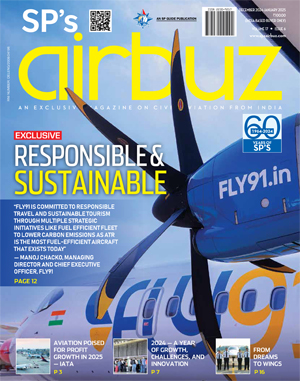Infrastructure - Toiling & Moiling

The business aviation sector is going through a quiet revolution. Growing annually at an impressive rate of 10 per cent, the aircraft industry is looking at a figure of 2,000 business aviation aircraft in India in the near future.
Having witnessed the arrival of the low-cost model of air travel on the Indian aviation scene and its progressive entrenchment, the first decade of the 21st century could be regarded as the renaissance of civil aviation in India. Customers thronged to it with unfettered enthusiasm even as the Czars of the airline industry like Naresh Goyal and Vijay Mallya continued to be skeptical and refused to accept the reality of this new phenomenon. The Indian market has matured over the years and realistic pricing has come to stay. The Indian consumer has seen through the gimmick of ‘one-rupee ticket’ and is today willing to pay for quality service. Airlines like IndiGo and SpiceJet have established new benchmarks in customer satisfaction, passenger comfort and punctuality. Both Jet Airways and Kingfisher dedicate a sizeable portion of their capacity to the low-cost model. Even though a new era has clearly been ushered in, lack of infrastructure and apathetic government policies continue to play spoilsport.
Business Aviation
However, apart from the excitement in the airline industry, the business aviation sector is going through a quiet revolution, in fact virtually an explosive growth, unnoticed by the public and the media. And as usual, infrastructure, government support and the regulatory framework are yet to play catch up. As in other sectors, even here it is growth which is driving the creation of infrastructure and not vice versa. Born in the early 1930s without much fanfare, business aviation, the unsung hero of the civil aviation industry, has grown to a modest 680-aircraft fleet today. Growing annually at an impressive rate of 10 per cent, the aircraft industry is looking at a figure of 2,000 business aviation aircraft in India in the near future. But this has not appeared to be sufficient inspiration for the government to unshackle business aviation and provide it the stimulus for unimpeded growth.
Problem Areas
The nightmare for an individual who dreams of owning an aircraft for non-scheduled operations begins with the import procedure. Navigating through the complex labyrinth of import laws, taxation and multiple clearances could easily deter the strong willed and the brave-hearted. It is a tribute to the amazing perseverance of the Indian entrepreneur that the business aviation fleet has grown to its current size and continues to aim for the skies. As there is no significant manufacturing facility for business aviation aircraft in India, there is a strong case for facilitating procurement of aircraft for corporate aviation and by individuals through customer-friendly regulations, unhindered single-window clearance and pragmatic tax regime.
Aircraft are generally viewed as symbols of capitalism, procured at the cost of the common man and the reason for some of the economic ills facing the country. With the economy sustaining a growth rate of eight to nine per cent, India is well beyond the take-off stage and is capable of asserting itself on the world stage on issues ranging from the World Trade Organisation (WTO) to Nuclear Non-Proliferation Treaty (NPT). Protectionism and excessive regulations are indicators of poor economic confidence and pessimism. Corporate aircraft are a symbol of economic growth and ought not to be seen as signs of unbridled opulence. They are a clear indicator of the direction in which the economy is headed. With the size of the business aviation fleet being linked to the fortunes of industrial houses and in turn to their employment potential, any curtailment of their growth due to adverse regulations will be counter-productive in the long run. It is time to revamp the policies to stimulate growth in the business aviation sector and help spur the procurement of corporate aircraft.
However, procurement of aircraft is only the preamble to the woes of a business aviation operator. The operating environment is not for the weak-hearted. Mike Jan Tindell, a 61-yearold veteran pilot who has close to 40 years of experience flying corporate aircraft all over the world, perceives the flying environment in India to be hostile right from the time of entry to the airport till 100 nautical miles out at 41,000 feet. His travails with Indian aviation begin again, the moment he calls Mumbai approach to end only when he is back on terra firma. Incidentally, Tindell has the distinction of flying the first G550 and has been flying one since then.
On an average, Mumbai alone has 38 business aircraft taking off every day. In the year 2010-11, Mumbai airport handled a total of 13,290 flights, a significant jump from 8,245 in 2006. Such figures certainly call for better infrastructure. It is only recently that Mumbai has set up a business aviation terminal of its own though its management, yet the services are a far cry from international standards. Today, Mumbai is the only airport in the world where the Captain is required to drive to the ATC to file a flight plan manually. Normally, this exercise takes an hour, but in the heavy traffic of Mumbai, it could well take up to two hours. Also, here the Captain is required to go for a communication briefing. This is not only unheard of in this time and age but also borders on the ridiculous. Refuelling shockingly calls for a wait of anywhere from eight to 12 hours, a minimum of four hours in emergency.





